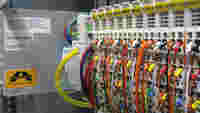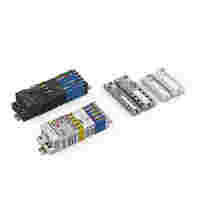Even before the first travelers arrive, the lights go on at many Swiss train stations. This also occurs at locations where no personnel are on site. In addition to lighting, there are other systems that the SBB must control and monitor, for example, elevators, escalators, clocks, door locks, building technology systems and pumps. Previously, around 23 different control systems, scattered across Switzerland, accomplished these tasks. In 2005, the SBB began a project to replace these different systems with a single new one. “We wanted to reduce the complexity and thus make the costs more transparent,” explains Milun Bozovic, Product Manager for Building and Control Technology at the SBB. At the end of 2012, they were ready: The control and error messaging system (LSS-CH for short) at the SBB became operative across the country following a four-year roll-out period.









